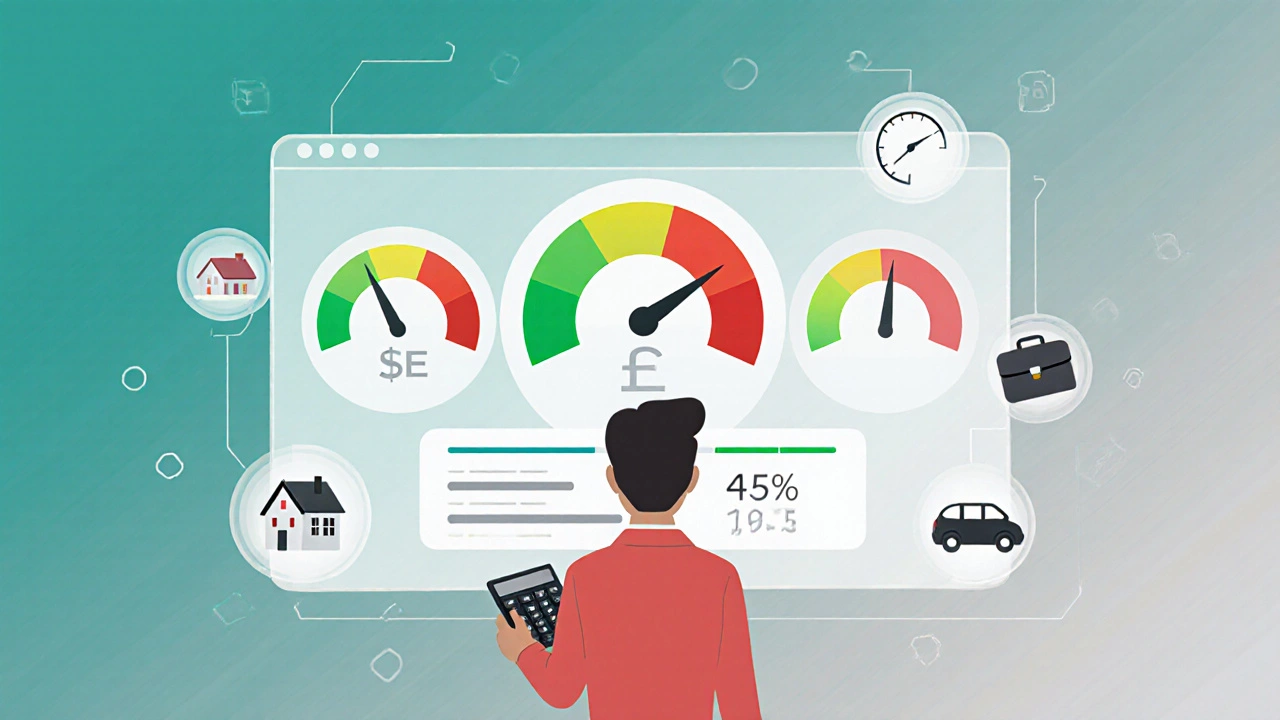Debt Consolidation: Why You Might Be Denied and How to Turn It Around
 Oct, 26 2025
Oct, 26 2025
Debt Consolidation Eligibility Checker
Debt Consolidation Eligibility Assessment
Enter your financial details to see if you're likely to qualify for a debt consolidation loan. Based on lender requirements, we'll identify your strengths and areas to improve.
Your Financial Information
Eligibility Assessment
Key Factors
Ever wondered why a lender might turn you down when you apply for a debt consolidation loan? It’s not just bad luck-specific factors in your credit profile and financial picture can trigger a denial. This guide breaks down the real reasons lenders say “no,” shows you how to spot red flags before you apply, and offers practical steps to boost your chances of approval.
What Is Debt Consolidation?
Debt Consolidation is a financial strategy that merges multiple high‑interest debts-like credit‑card balances, payday loans, or personal loans-into a single loan with a lower interest rate and a single monthly payment. By simplifying payments, borrowers can reduce interest costs, improve cash flow, and work toward becoming debt‑free faster. The concept works best when the new loan’s rate is significantly lower than the average rate of your existing debts.
Why Lenders Deny Debt Consolidation Applications
Lenders assess risk the same way they evaluate any loan. Below are the most common red flags that can lead to a denial:
- Low Credit Score: A score below 620 often signals higher risk, prompting lenders to reject the application.
- High Debt‑to‑Income (DTI) Ratio: When your monthly debt obligations exceed 45% of your gross income, lenders see you as over‑extended.
- Recent Bankruptcy or Insolvency: A bankruptcy filing within the past 2‑4 years (depending on the type) typically disqualifies you.
- Negative Items on Your Credit Report: Collections, charge‑offs, or multiple recent hard inquiries raise concerns.
- Insufficient Collateral (for secured loans): If you’re applying for a secured consolidation loan and lack adequate assets, approval becomes unlikely.
- Poor Payment History: Missed or late payments on existing debts indicate a higher probability of default.
- Unstable Employment: Frequent job changes or short tenure at your current job can signal income instability.

How to Assess Your Own Eligibility Before Applying
Running a quick self‑check can save you time and avoid unnecessary credit pulls. Use the table below to compare your current numbers against typical lender thresholds.
| Factor | Typical Minimum | Your Current Value | Action Needed |
|---|---|---|---|
| Credit Score | 620 | Enter your score here | Boost by paying down balances and correcting errors |
| Debt‑to‑Income Ratio | ≤45% | Calculate your DTI | Reduce debt or increase income |
| Bankruptcy Age | >2 years (Chapter 7) / >4 years (Chapter 13) | Enter filing date | Wait for the required period |
| Recent Hard Inquiries | ≤2 in 12 months | Count inquiries | Pause new credit applications |
| Employment Stability | ≥12 months at current job | Enter tenure | Provide proof of stable income |
Replace the placeholder text with your actual numbers to see where you stand. If you fall short on any row, focus on that area before you submit a formal application.

Steps to Improve Your Chances of Approval
- Check and clean your credit report. Obtain a free copy from the major bureaus, dispute inaccurate items, and request removal of outdated collections.
- Pay down high‑interest balances. Reducing your overall debt lowers both your DTI and the utilization rate that affects your credit score.
- Build a short‑term savings buffer. Lenders like to see emergency funds covering at least one month of expenses, indicating lower default risk.
- Negotiate with current creditors. Ask for a temporary interest‑rate reduction or settlement; a lower balance improves your ratios.
- Consider a secured consolidation loan. Using a vehicle or home equity as collateral can offset a low credit score, but weigh the risk of asset loss.
- Maintain steady employment. If you’ve recently changed jobs, wait until you’ve hit the 12‑month mark before applying.
- Limit new credit inquiries. Each hard pull can shave a few points off your score, pushing you below the lender’s cutoff.

What to Do If You’re Still Denied
Denial isn’t the end of the road. Here are viable alternatives that keep you moving toward debt relief:
- Debt Management Plan (DMP): Work with a credit‑counselling agency to negotiate lower interest rates and a structured repayment schedule.
- Secured Personal Loan: If you own a car or have equity in a property, a secured loan may be approved where an unsecured one isn’t.
- Balance Transfer Credit Card: Some issuers offer 0% intro rates for 12‑18 months; this can buy you time if you can pay the balance before the rate jumps.
- Home Equity Line of Credit (HELOC): For homeowners with sufficient equity, a HELOC can provide lower‑rate funds, though it puts your house at risk.
- Negotiated Settlement: In some cases, you can settle for a lump‑sum payment that’s less than the full amount owed.
Each option carries its own pros and cons, so evaluate them against your financial goals and risk tolerance.
Quick Eligibility Checklist
- Credit score ≥ 620?
- DTI ≤ 45%?
- No bankruptcy in the past 2‑4 years?
- Clean credit report (no recent collections or charge‑offs)?
- Stable employment ≥ 12 months?
- Enough income to cover new monthly payment?
If you tick most of these boxes, your odds of securing a debt consolidation loan are solid. If not, focus on the weak spots first.
Can a low credit score be fixed quickly enough to get a consolidation loan?
Improving a credit score takes time, but you can see modest gains in 30‑60 days by paying down balances, correcting report errors, and avoiding new hard inquiries.
What DTI ratio is considered safe for most lenders?
A DTI of 35% or lower is ideal; many lenders will still approve up to 45% if other factors (like credit score) are strong.
Does filing for bankruptcy permanently block me from consolidation?
Bankruptcy doesn’t ban you forever, but lenders usually require a waiting period-2 years for Chapter 7 and 4 years for Chapter 13-before you can qualify.
Are secured consolidation loans safer for borrowers with poor credit?
Because the loan is backed by collateral (like a vehicle or home equity), lenders view the risk as lower, often approving borrowers with scores in the high‑500s.
What’s the difference between a debt management plan and a consolidation loan?
A DMP is a negotiated repayment schedule managed by a credit‑counselling agency, usually without taking out a new loan. A consolidation loan replaces existing debts with a single new loan.
